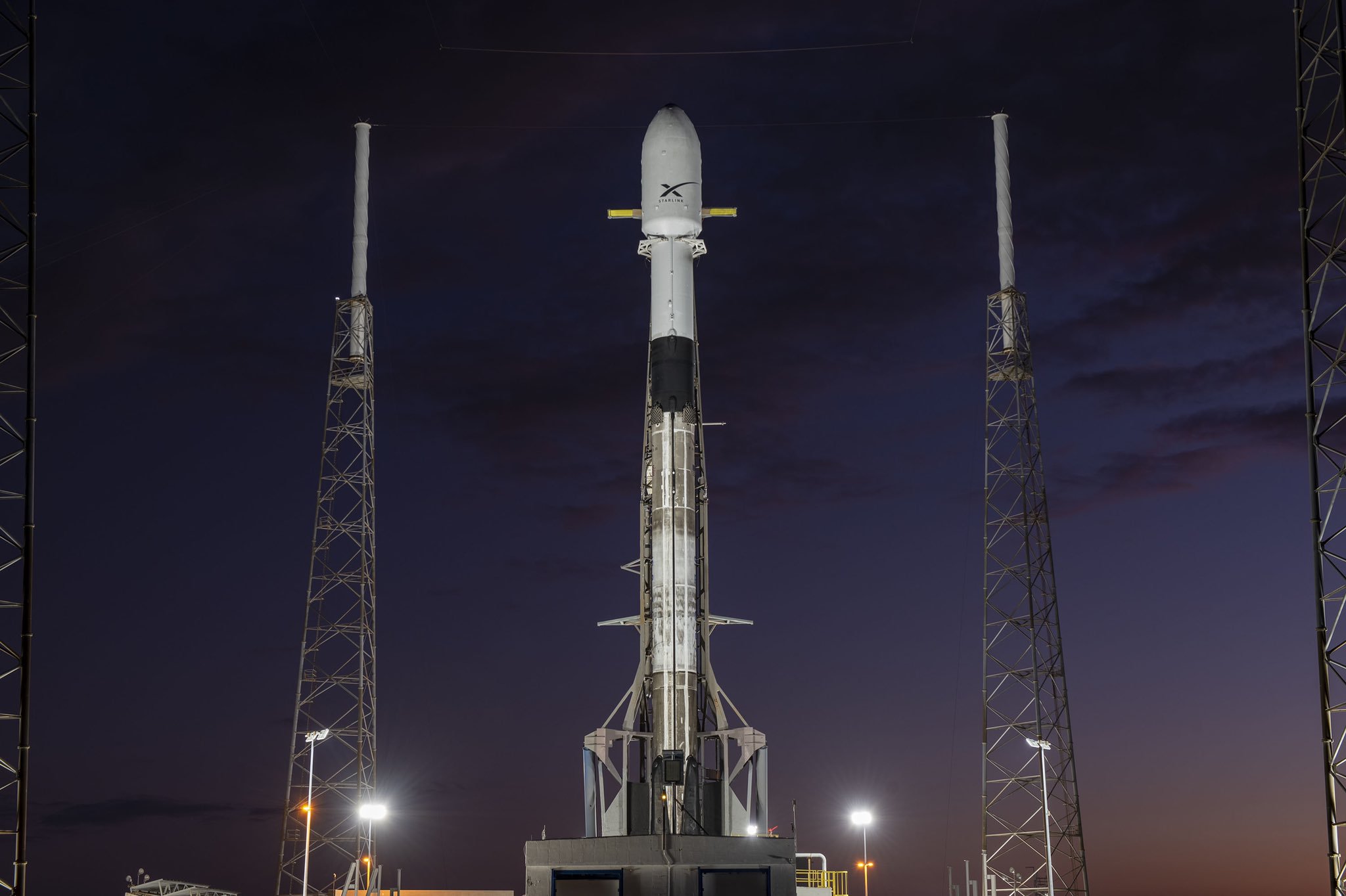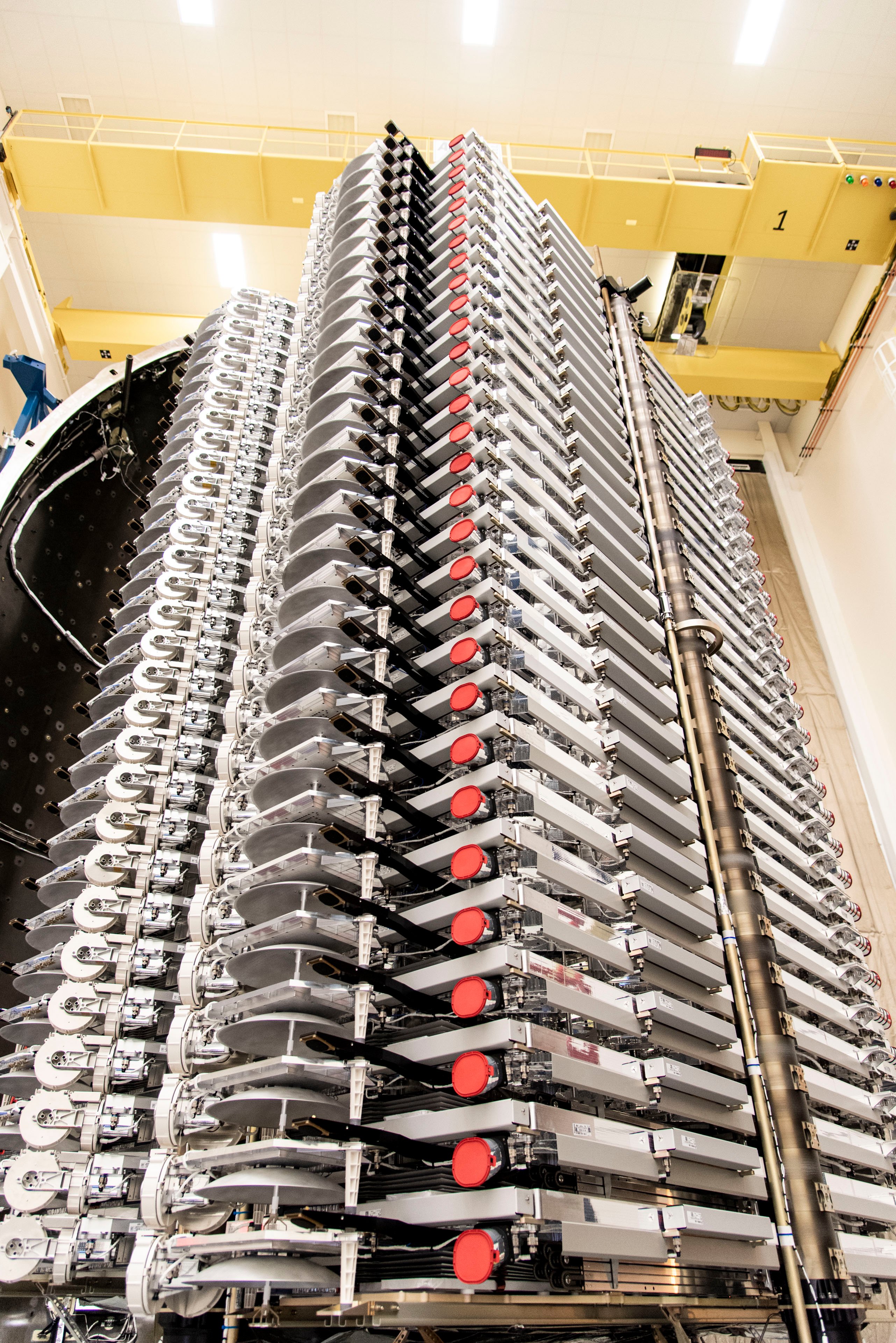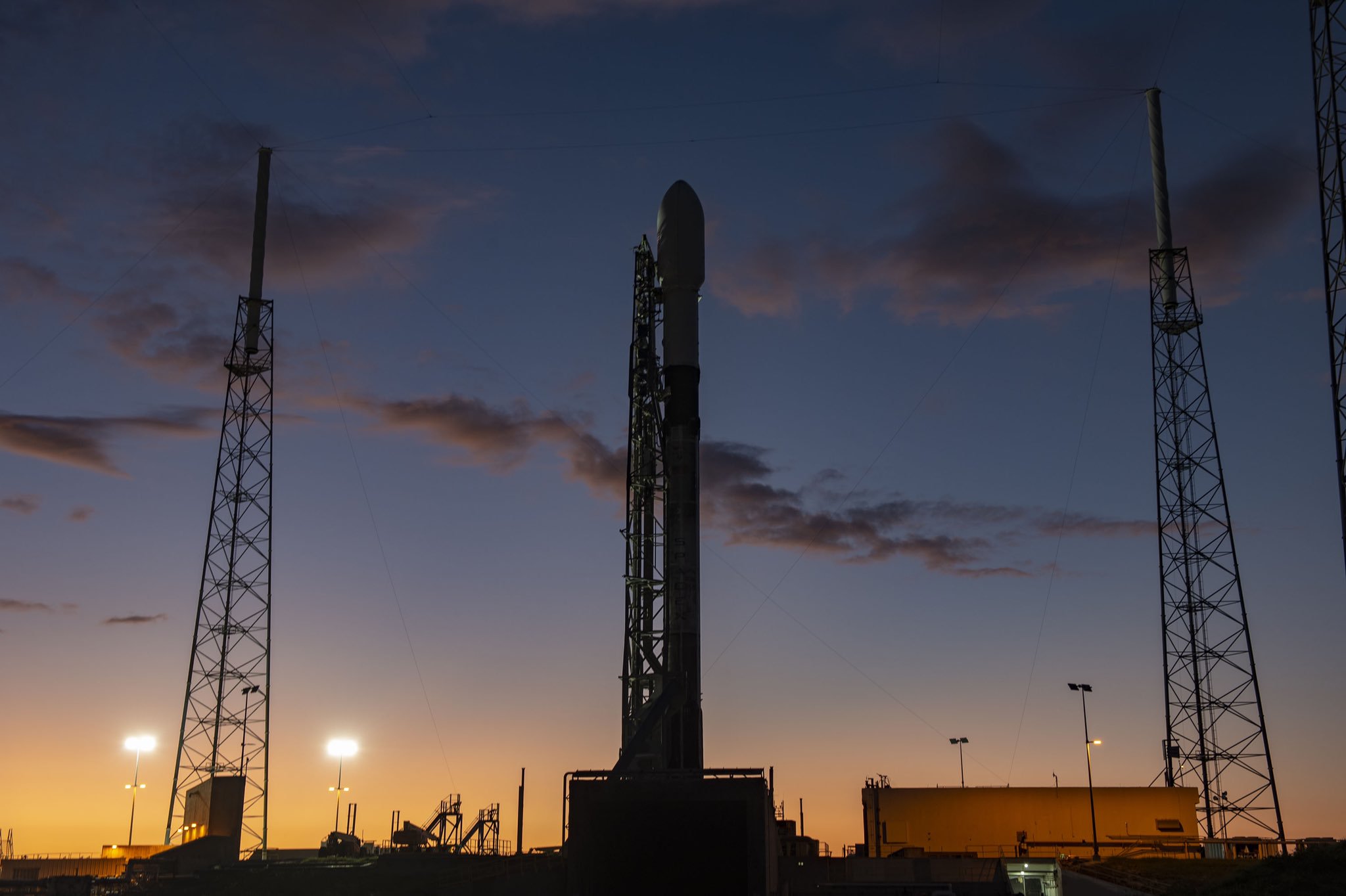SpaceX to Launch 60 Starlink Satellites for Megaconstellation Today. Here's How to Watch
Liftoff is at 9:56 a.m. EST (1456 GMT)!

The private spaceflight company SpaceX will launch 60 Starlink internet satellites to join its growing megaconstellation in orbit today (Nov. 11) and you can watch it live online.
A SpaceX Falcon 9 rocket will launch the Starlink mission from Space Launch Complex 40 at the Cape Canaveral Air Force Station in Florida. Liftoff is scheduled for 9:56 a.m. EST (1456 GMT).
You can watch SpaceX's Starlink launch webcast here and on the Space.com homepage, courtesy of SpaceX, beginning at about 9:41 a.m. EST (1441 GMT). You can also watch the launch directly from SpaceX here.
This is SpaceX's second Starlink launch of the year. The mission will also mark the first time SpaceX has flown a Falcon 9 first-stage booster for the fourth time, as well as reused a rocket payload fairing (the nose cone that protects a satellite during launch).
Video: Watch SpaceX Release 60 Starlink Satellites All at Once
Related: SpaceX's 1st Starlink Megaconstellation Launch in Photos!
SpaceX's Starlink project aims to build a massive constellation of broadband internet satellites to provide constant high-speed internet access to users around the world.
"Enabled by a constellation of low Earth orbit satellites, Starlink will provide fast, reliable internet to populations with little or no connectivity, including those in rural communities and places where existing services are too expensive or unreliable," the company wrote in its Starlink mission description.
Get the Space.com Newsletter
Breaking space news, the latest updates on rocket launches, skywatching events and more!
Last month, SpaceX President Gwynne Shotwell told reporters at the 70th International Astronautical Congress in Washington, D.C. that Starlink is expected to begin commercial service in 2020. SpaceX CEO and founder Elon Musk has said the company will need at least 400 Starlink satellites in orbit to offer "minor" broadband coverage, with up to 800 needed for "moderate" coverage.

In the mission description for today's launch, SpaceX states that Starlink will begin commercial internet services after just six launches (with about 360 satellites in orbit) by offering broadband coverage to users "in parts of the U.S. and Canada."
The company would then grow its services with more launches, "rapidly expanding to global coverage of the populated world after 24 launches," according to SpaceX's mission description. That would put a base level Starlink constellation at 1,400 satellites.
SpaceX initially aimed to launch up to 12,000 Starlink satellites for global internet coverage. But the company is eyeing plans to boost that number by another 30,000 satellites.
When the first 60 Starlink satellites launched in May, there were clearly visible in the night sky, thrilling some observers and disappointing some scientists worried about what such a massive satellite constellation could mean for astronomical observations and space debris concerns.
SpaceX representatives have said the company has taken steps to ensure that its satellites can be deorbited if they're not working properly.
"The Starlink satellites will deploy at an altitude of 280 km [174 miles]. Prior to orbit raise, SpaceX engineers will conduct data reviews to ensure all Starlink satellites are operating as intended," the company's mission overview states. "Once the checkouts are complete, the satellites will then use their onboard ion thrusters to move into their intended orbits."
"Additionally, components of each satellite are 100% demisable and will quickly burn up in Earth’s atmosphere at the end of their life cycle—a measure that exceeds all current safety standards," SpaceX wrote.

In fact, one of the 60 Starlink satellites launching today may already have a glitch. SpaceX is studying the satellite to be sure.
"Watching 1 sat that may not orbit raise; if not, 100% of its components will quickly burn up in Earth’s atmosphere," SpaceX wrote in a Twitter update Sunday (Nov. 10).
If SpaceX is unable to launch its new Starlink mission today, the company has a backup launch opportunity on Tuesday, Nov. 12, at 9:34 a.m. EST (1434 GMT).
Visit Space.com today for complete coverage of SpaceX's Starlink launch.
- SpaceX's Starlink Constellation Could Swell by 30,000 More Satellites
- SpaceX's Starlink Broadband Service Will Begin in 2020: Report
- 'Whoa, It Worked': Elon Musk Tweets Via SpaceX's Starlink Satellites
Email Tariq Malik at tmalik@space.com or follow him @tariqjmalik. Follow us on Twitter @Spacedotcom and on Facebook.

Join our Space Forums to keep talking space on the latest missions, night sky and more! And if you have a news tip, correction or comment, let us know at: community@space.com.

Tariq is the Editor-in-Chief of Space.com and joined the team in 2001, first as an intern and staff writer, and later as an editor. He covers human spaceflight, exploration and space science, as well as skywatching and entertainment. He became Space.com's Managing Editor in 2009 and Editor-in-Chief in 2019. Before joining Space.com, Tariq was a staff reporter for The Los Angeles Times covering education and city beats in La Habra, Fullerton and Huntington Beach. In October 2022, Tariq received the Harry Kolcum Award for excellence in space reporting from the National Space Club Florida Committee. He is also an Eagle Scout (yes, he has the Space Exploration merit badge) and went to Space Camp four times as a kid and a fifth time as an adult. He has journalism degrees from the University of Southern California and New York University. You can find Tariq at Space.com and as the co-host to the This Week In Space podcast with space historian Rod Pyle on the TWiT network. To see his latest project, you can follow Tariq on Twitter @tariqjmalik.









